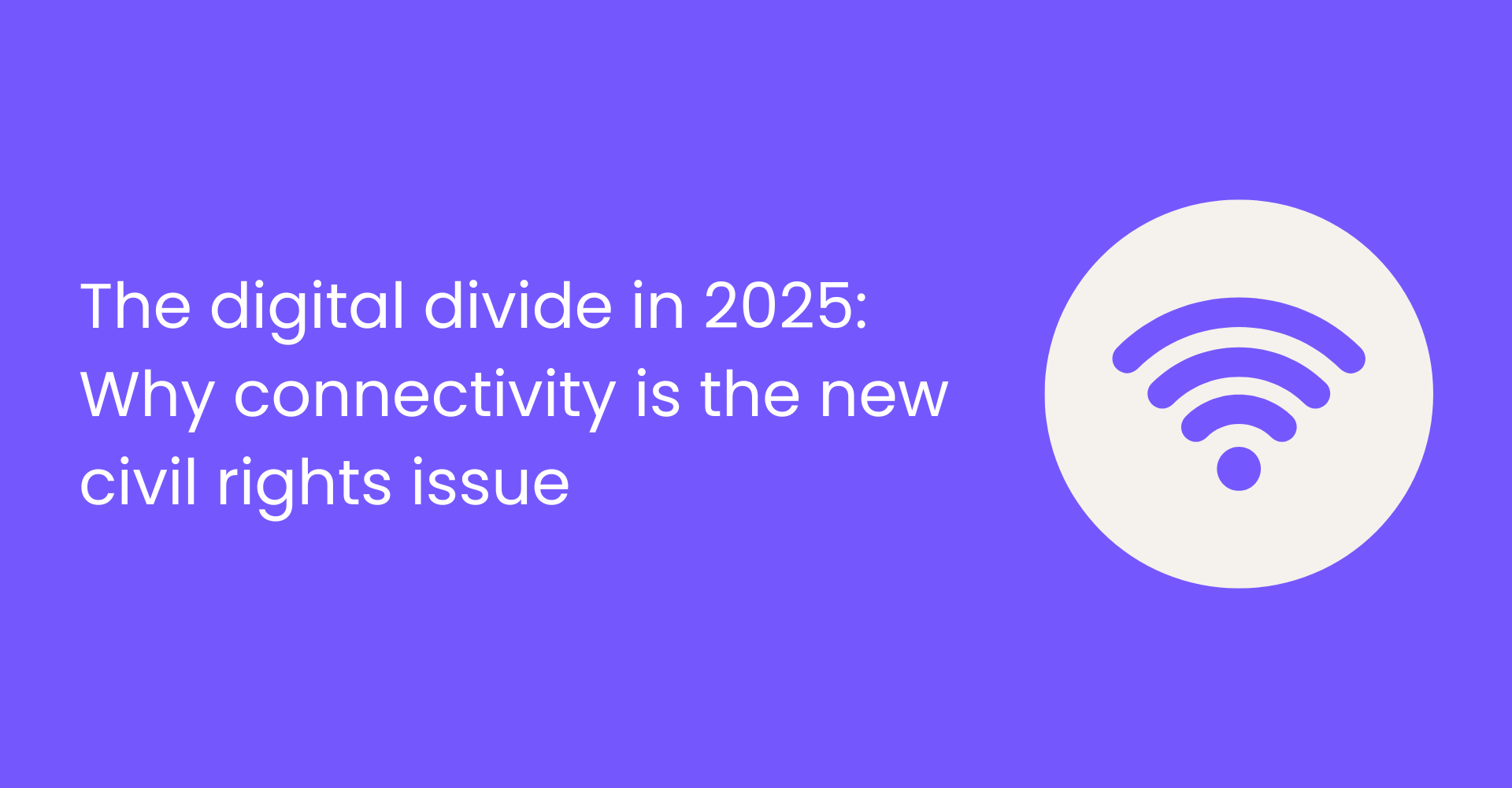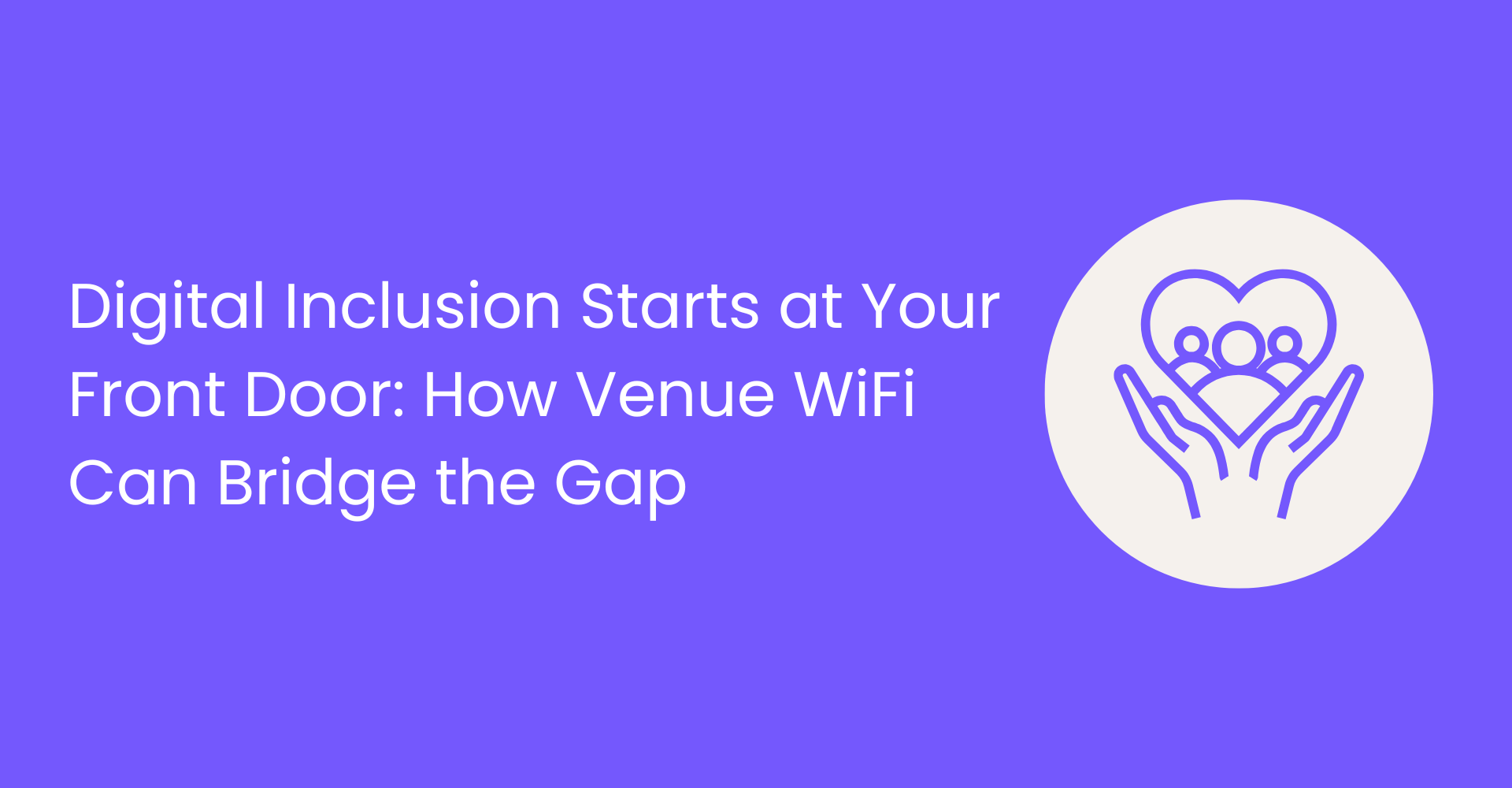The digital divide in 2025: Why connectivity is the new civil rights issue

The digital world has transformed in my lifetime. I remember getting my first Nokia 3210 back in the late 90s, when we had word limits on texts and I had to go to an internet cafe to read my emails. Smartphones and the internet are now integral parts of daily life for people around the world.
As this digital revolution forges ahead, a digital divide is deepening. Digital exclusion - having one or more barriers to accessing the internet and engaging online - is increasingly impacting people’s lives, as everything we do seems to be moving online. From connecting with family, to opening a bank account or booking a doctor’s appointment, digital services are now the default way of communicating, learning, and working.
At Purple, we believe that making public WiFi secure and easily accessible for all is one of the most powerful steps to ensure that the benefits of the connectivity are shared by everyone, no matter their circumstances.
The reality today
The lack of access to affordable, reliable internet is one of the world's most significant ongoing inequalities 1..
- Globally, 2.6 billion people still do not have access to the Internet
- In the least developed countries, approximately 65% of households still lack access to the internet
- Women are disproportionately affected, being 19% less likely than men to access mobile connectivity worldwide
While connectivity levels are high in the UK, a significant portion of the population remains digitally excluded due to a mix of affordability, digital skills, and device access barriers 2..
The scale of the issue in the United Kingdom is actually pretty shocking:
- 11 per cent – equivalent to 3.1 million – households do not have access to the internet at home 3.
- 7.9 million adults in the UK lack basic digital skills, while 21 million adults cannot complete essential digital tasks for work
- 1.9 million households struggle to afford their mobile contract
- 1.6 million adults do not own a smartphone, tablet, or laptop
These numbers show that simply having network coverage is not enough; the affordability, reliability, and security of that connection are absolutely key to enable inclusion.
The cost of being left behind
This kind of exclusion impacts all aspects of people’s lives, creating financial, social, and health problems, and costing the UK economy billions in missed opportunities 4..
1. Higher costs for essential services
Digital exclusion creates a 'poverty premium', as those who aren’t able to shop, bank, or access services online miss out on significant savings. This isn’t just about being able to shop around for bargains (though that is a real factor), it’s also the higher cost of services for those without internet access, such as energy, credit and banking.
- People with high digital engagement can save over £1,100 more a year compared to those with low engagement 5.
- Without internet access, consumers can pay as much as 25 per cent more on essential goods and services 6.
- 29% of those who are offline find it difficult to engage with financial services
2. Limited access to education, healthcare, and jobs
Digital skills and access are now prerequisites for engaging with essential services, including healthcare, education and employment support.
- 30% of people who are offline feel that the NHS is one of the most difficult organisations to interact with
- 74% of digitally engaged people use online tools to manage their health
- 4% of 8-25 year olds lack both a learning device and home internet access (c.570,000 young people)
- Digital skills are critical for employment, with 82% of online job vacancies listing them as an essential requirement
3. Social isolation and mental health impacts
Digital connectivity is increasingly important for maintaining social connections, supporting mental health, and accessing support services.
- 83% of digitally engaged people say the internet helps them connect with friends and family 7.
- Digitally excluded older adults are 32% more likely to experience depressive symptoms 8.
- 33% of those offline say it is difficult to use council and government services
Among vulnerable people, interventions to promote digital inclusion often lead to substantial social benefits, with 52% of those receiving support reporting that they felt less lonely 9..
Why businesses have a role to play
The economic case for intervention is overwhelming: for every £1 invested in digital skills training, approximately £9.48 is generated in the UK economy 10.. Digital inclusion interventions are estimated to generate an almost £2.7 billion benefit for UK businesses. So it’s a bit of a no-brainer that we ought to get involved.
At Purple, it’s our mission to free the internet, to break down barriers to connectivity and give everyone access to secure WiFi. By leveraging public WiFi networks, we can offer a reliable digital 'first step' to the millions who struggle with device and data costs.
For tech businesses: We all know that the biggest digital breakthroughs are yet to come. Investing in digital inclusion collectively is an investment in future talent, broader markets, and a more resilient society.
For policy makers and local government: You hold the key to turning public spaces into digital lifelines. Implementing secure public WiFi powered by technology like ours can immediately address the affordability and access barriers for the most vulnerable populations, driving economic growth and public service efficiency.
The power of connectivity is too great to remain exclusive. Let’s collaborate to build a truly inclusive digital society for the benefit of all.
-------------------
Sources
1. UK Government Digital development strategy 2024 to 2030
2. Good Things Foundation Digital Inclusion Datasets 2024
3. Centre for Social Justice 2023
4. 10. The Economic Impact Of Digital Inclusion 2022





.png)
.png)





